![emblem_[remade+upscaled] emblem [remade+upscaled]](/file/Mount-and-Blade-2-Bannerlord/emblem_[remade+upscaled].png)
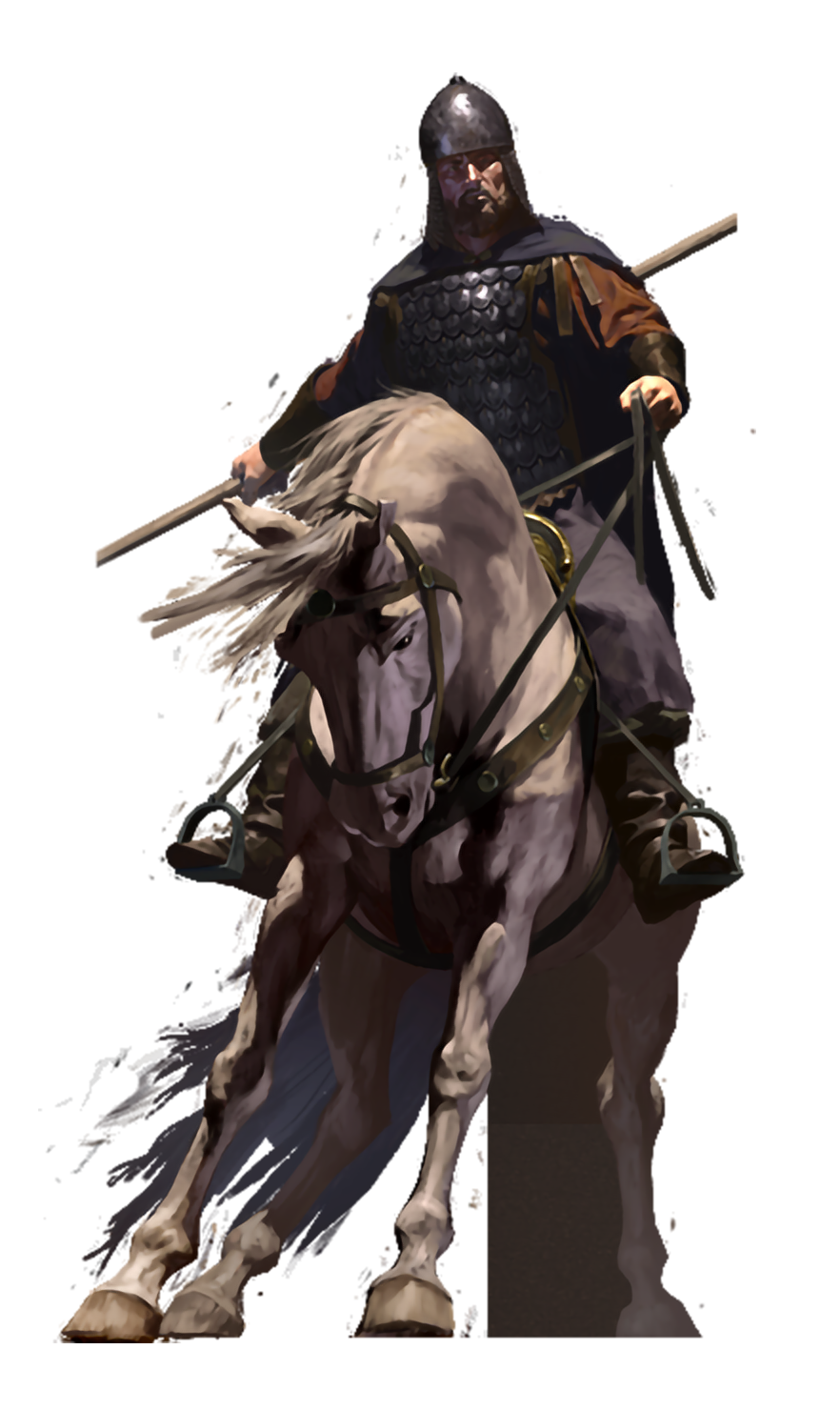 the Northern Empire
the Northern Empire
Aristocratic and Oligarchic Republic
Traditional Legalists and Stoics. A land of the Wealthiest Imperial Families.
Ruling Senator: Lucon Osticos
Backstory & History
The Culture
The Calradians are the people of the Empire, though by now they have given their name to the entire continent which they dominate. A thousand years ago, they were an undistinguished tribe living in the hill country between the southern sea and the Battanian woods. One tradition set them apart from their neighbors - the Calradoi had no kings. Their citizenry has always taken an intense interest in the art of self-government, the balance between protecting the liberty of individuals and the needs of the state. Perhaps this is why they had a slight edge in the endless wars between one town and another, keeping armies in the field just a little longer, bouncing back just a little more quickly from a defeat. Some of their neighbors federated with them; others were overrun. Eventually the Calradians formed an empire, which evolved into a monarchy in all but name. Their leaders are no longer distinguished civic elders but great landholders scattered across the continent; the striking force of their armies is no longer citizen-infantry but heavily armored cataphracts in the retinues of the wealthy. But they still take their civic traditions very seriously, believing that the Calradian ideal can unite a continent in peace, if only the ”barbarians” beyond their borders would agree to submit to it. [— spcultures.XML]
The Kingdom
Many of the oldest families of the Empire live in the north. They came here as marcher lords, granted vast tracts of land by their colleagues in the Senate to keep 'pacified' northern tribes in check and hold the frontiers against Battanian, Sturgian, and Khuzait raiders. They drained marshes and turned the river floodplains into wheatfields, cut back forests and turned the hillsides into pasture. But as the republic became an empire and as emperors became more and more dependent on money and lands to reward their loyal soldiers, the nobility here began to fear that their estates would one day be seized by some cash-starved tyrant. Consequently, in the ongoing imperial civil war they have become some of the strongest champions of Lucon, who sees a Senate of established property-holders as the supreme authority and the emperor as its servant. [— spkingdoms.XML]
The Leader
The northern third of the Empire is ruled by Lucon, who represents a long-standing oligarchic trend in imperial politics. It holds that strict adherence to imperial law is the best guarantee that the empire will not become a tyranny. Oligarchs like Lucon also tend to believe that only landowners can have the extensive education, experience in government, and stake in property to really understand and appreciate the law, and thus the Senate should be supreme. [— heroes.XML]
In Summary
The Calradian Empire is in decline. Even before the murder of the Emperor Arenicos, the once united realm was torn by political rivalries. Today, those factions are in open war. Yet Calradians endure. They are technologically more advanced than their neighbors and their mastery of engineering is not just evident in their aqueducts, beautiful architecture and massive city walls. It also makes them experts in siege warfare. [— (StoryMode) module_strings.XML]
Banners |
Clans |
Leader |
Settlements |
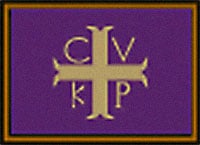 |
OsticosRuling Clan - Old Aristocratic Patricians of Wealth - Oligarchic - Strict Traditional Legalists |
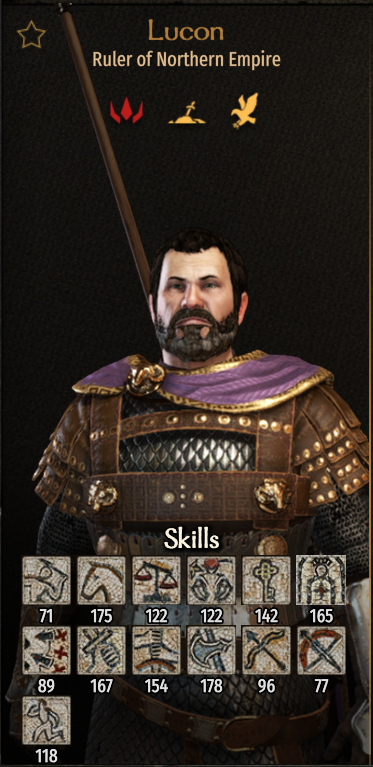 |
Atrion Castle Mecalovea Castle |
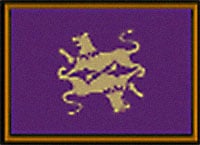 |
ArgorosPhilosophical and Loyal Stoics - Aspires to Restore Empire into Republic - Virtuous Oath Sworn Northern Wards - Ties to the Betrayed Legion - Diligent Oligarchic Moralists |
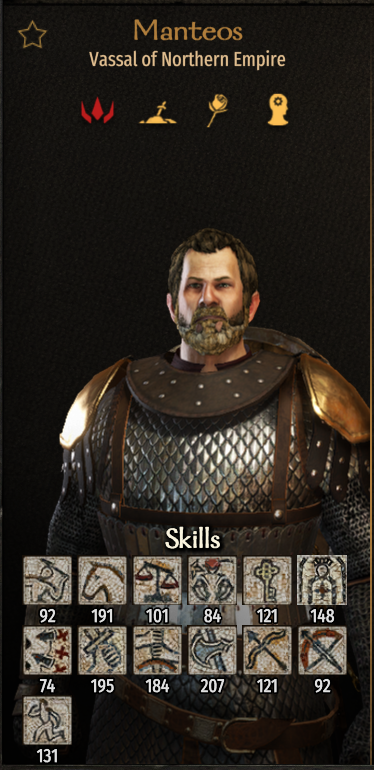 |
Ataconia Castle |
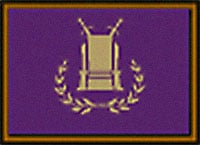 |
NeretzesClan of Drosios Neretzes, the Old Emperor - Aristocratic Close-Minded Blowhards - Traditional Legalists |
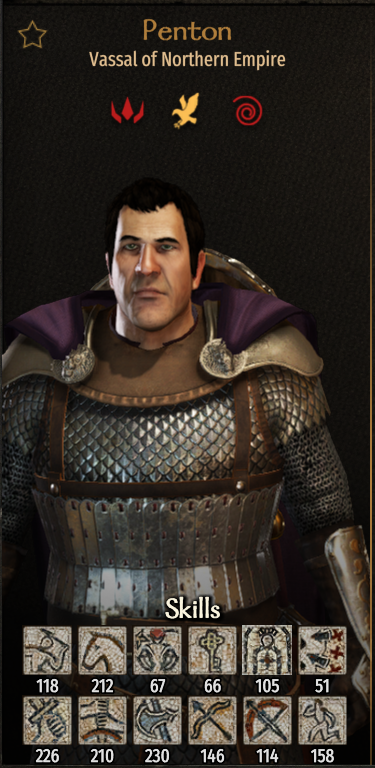 |
Varagos Castle Gaos Castle |
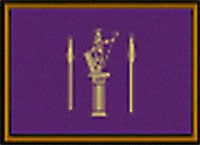 |
ImpestoresAmbitious Aristocratic Fanatic Oligarchics - Eccentric Stoics - Epipheria, Unlike Most Women, Took Up Arms |
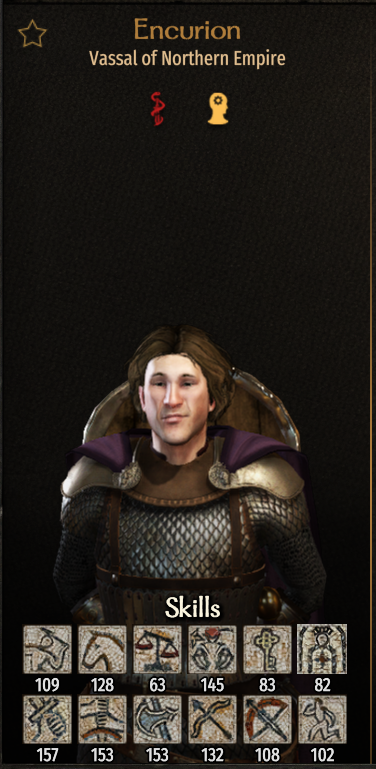 |
Amprela |
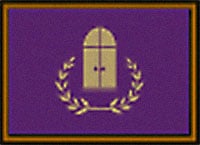 |
DolentosCalm and Cautious Clan - Led by Oligarch - Lieutenant is like Marcus Antonius Primus |
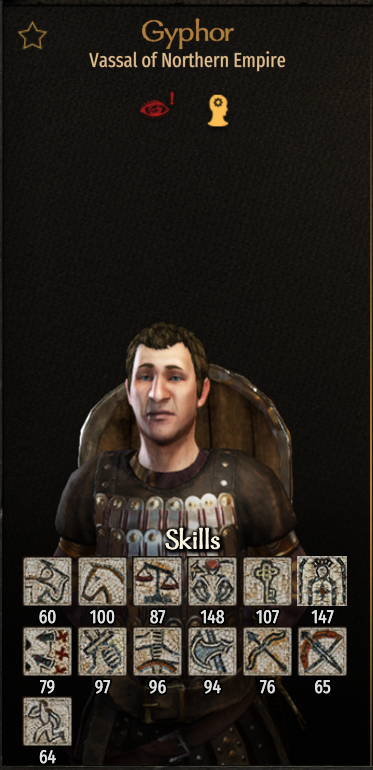 |
Myzea |
 |
ChonisOligarch and Competent Fanatic - Lieutenant is Genuine Republican akin to a Military-Oriented Cicero |
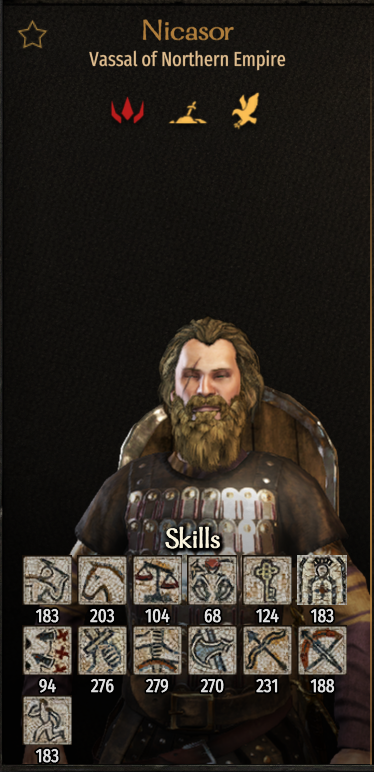 |
Lochana Castle |
 |
PhalentesClan of Tasynor - Smug, Privileged, and Self Righteous - Panalea, Former Heir Denied Right to Inherit by Senate |
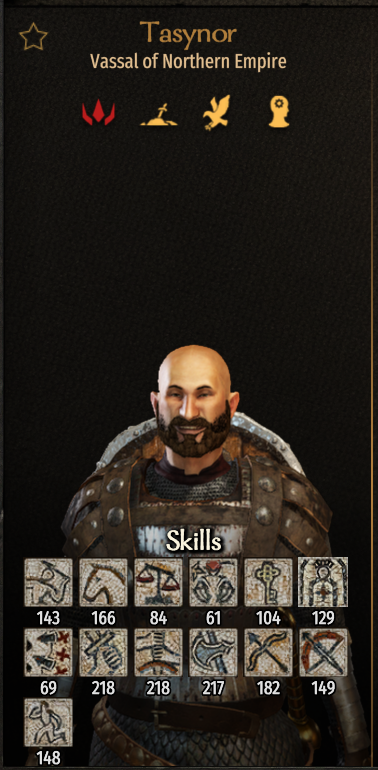 |
Epinosa Castle |
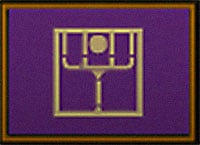 |
VatatzesNon-Ideological Clan - Clan Head Served with Lucon - Dissolute Heir, Relaxed in Morals - Lieutenant's Daughter, Rustica, Hostage of Hongeros of Southern Empire |
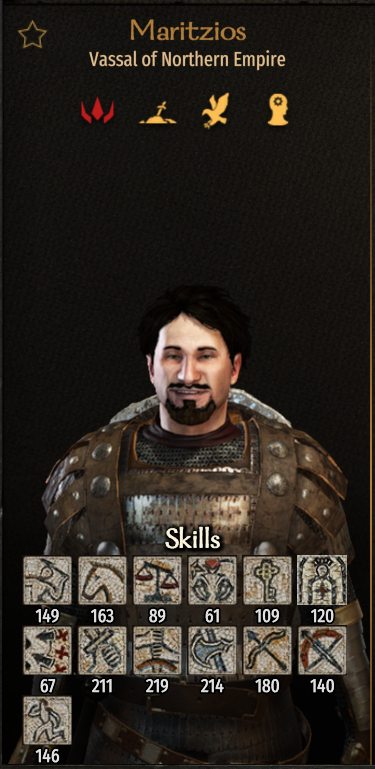 |
Syratos Castle |
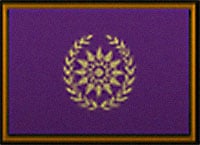 |
SerapidesClan Head is like a Latter-Day Scipio Africanus - Son Wishes to Rebuild Clan |
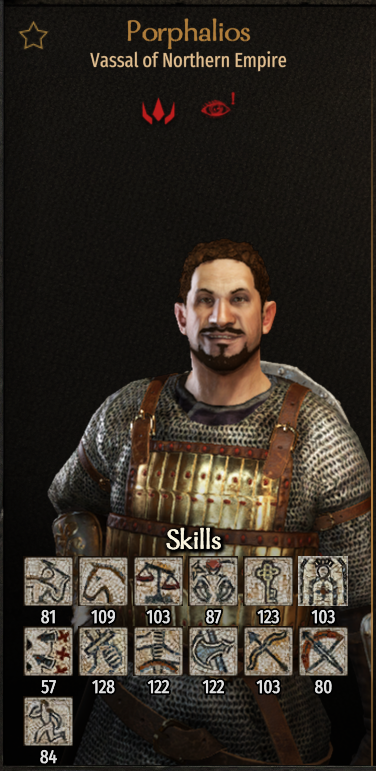 |
Rhesos Castle |
Northern Empire Territory |
||
 |
Towns |
|
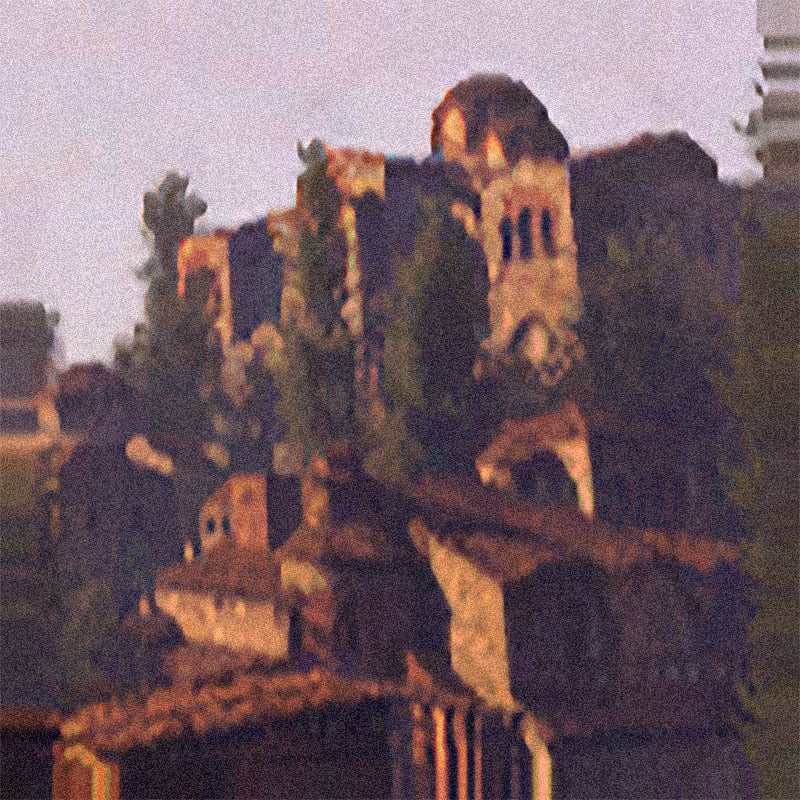 |
Castles |
Northern Empire Castles List |
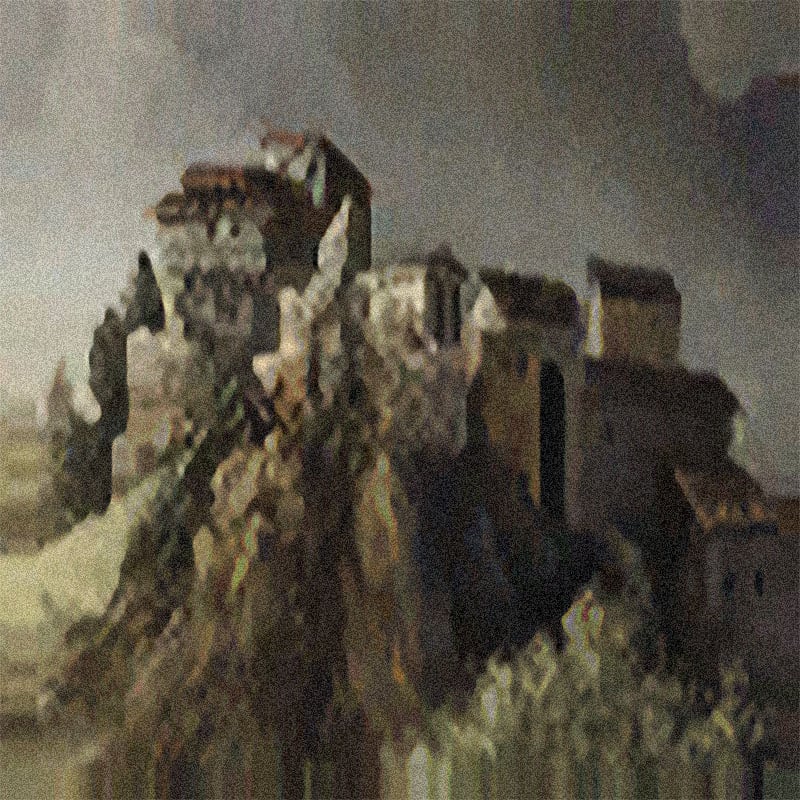 |
Villages |
Northern Empire Villages List |
Dev Diaries:
Empire Pt. 1
The Empire is in some ways the centre of gravity of the game, we're going to divide this blog into two parts. At the start of the game the Empire is divided into three factions engaged in a civil war. But before we describe the three factions and what they stand for, let us look at how the conflict started....
A thousand years ago, the Calradoi were one of a dozen tribes living in the hill country between the southern sea and the Battanian woods. Over time, they subjugated their neighbours, forcing them into a confederation of city-states. Perhaps they were slightly fiercer than the others, or just lucky, or perhaps it was the one tradition that set them apart - the Calradoi had no kings. Ever since the hero Echerion slew the tyrant Cypegos, the institution of the monarchy was banned, in theory at least. There was an assembly of free citizens that met occasionally, a senate of elders (in practice the largest landowners) that sat permanently, and - when it was absolutely necessary - supreme command could be invested for a short time in the person of an emperor, a title that back then meant little more than the right to lead an army.
From their heartland in the hills the Calradoi began to spread outward. As they did so, their political traditions – never written down – began to change. Soon, the army was in the field more years than not, and gradually the emperors stopped retiring at the end of campaigns. The senators meanwhile moved to the conquered provinces and acquired great estates. The capital moved from place to place, and the assembly of the people was called wherever the emperor desired. In practice, this was usually an army camp where his veterans could be relied upon to shout down any opposition. The question of succession was always a potential crisis. Usually, the emperor nominated an heir, the senate ratified his choice, and the people (meaning the army) acclaimed it. But this did not always happen smoothly, and then the succession was settled on the battlefield of a civil war.
Twenty years ago, a general named Arenicos donned the purple mantle worn by the emperors, and placed the laurel-crown-that-was-not-a-crown on his brow. His military record, his diligence in rooting out corrupt and inefficient magistrates, and the confidence he could inspire with a single speech made him a popular ruler. He also had the gift of being everything to everyone. He rose to prominence as a man of the people and the army, but he also worked closely with landlords and led them to believe he might restore power of the Senate. He praised the Calradian republican ideals as the pinnacles of human achievement, yet married the daughter of a petty king from the lands east of the empire to shore up an important trade route, formed an elite bodyguard of foreign mercenaries loyal only to him, and turned a blind eye when cults began to worship him as a sacred monarch. He spoke of a revived Calradia but kept his council on the details.
There was one shadow hanging over the reign of Arenicos - his reluctance to choose an heir. It was though he was casting around for someone who grasped his vision, but never found one. Traditionally, emperors looked in three places for their successors: their family, the elders of the Senate, and the upper ranks of the army. His one child, Ira, was a daughter. There had been ruling empresses of Calradia in the past, but Ira had a wild and irreverent streak. Her right to rule was championed by her mother, Rhagaea, Arenicos's foreign-born wife. “It is good for the children of emperor's to succeed their fathers,” her partisans said. “If we unite in loyalty to the imperial family, the civil wars will stop.” A faction of powerful nobles under the honourable but stiff-necked aristocrat Lucon demanded that the Senate choose the next emperor. "We understand politics and law,” they said. “Return to the old days; return power to us." Meanwhile, the wildly popular Garios, victor of wars against Battania and the Aserai, let it known that he expected his veterans be allowed to acclaim a new emperor. "The corruption of the powerful saps our strength," he told his men. "Let you, the soldiers, who bleed for this land, choose its rulers."
Time was running out. Arenicos was getting older. He needed to make some sort of decision, and soon. And then, returning to his palace in the southern town of Lycaron after his latest victorious campaign on the borders, he asked for some time alone in his chamber to nurse a splitting headache; when his guard checked in on him a few hours later, he was lying dead in a pool of blood. Immediately, Lucon convened a gathering of senators in his power base in the north and had himself declared emperor. Garios, campaigning on the Battanian frontier, stood before an assembly of his soldiers who cried out for him to don the purple. And Rhagaea emerged from the palace and addressed the throng that had gathered at the reports of the emperor's death. She raised before them the slain emperor's robe, drenched in his blood. The crowd cried out that she should be the empress, that the emperor's family must rule from this day on, and that she must take vengeance on his murderers - although who exactly that was, at this point, was mostly a matter of rumour. Civil war again loomed - and this time, with three equally balanced and determined factions eager to fight, it looked as though it might be more terrible than ever.
The Empire is the last faction - or rather, the last three factions - to be looked at in our series. It is based on the classical tradition of Greece and Rome and their medieval successor, the Byzantines. There was a lot of change in over 2000 years of history, obviously. Although the Roman Republic became a de facto empire under Augustus, vestigial remnants - like the Senate - persisted to the 1300s. Meanwhile, what started as a bureaucratic state, with prefects and governors appointed for very short terms, evolved into a de facto feudalism by the 11th century with Byzantine magnates ruling fiefs and having military obligations like any count or duke in the West. The rules of succession meanwhile were never set in stone, which suits our purposes in the game very well. If a player has his or her eye on the purple, there are lots of different ways of gaining legitimacy. The waning years of the Roman Republic, the time of Caesar, Antony, Octavius, Cleopatra, Cato the Younger and Cicero, have had a huge impact on Western political thinking and are a major inspiration for literature, so we've drawn a few characters from that era. But Byzantine rulers like Justinian and Alexios Comnenos who brought the empire back from the brink are equally fascinating personalities, as are the ruling empresses like Zoe and Irene.
Dev Diaries:
Empire Pt. 2
Last week, we had a look at the politics, history and personalities of the three imperial factions. Now we'll see how they'll be represented in-game.
Militarily, the Empire's troop types and equipment is drawn from ninth to eleventh centuries, a period of Byzantine resurgence. The Byzantines' best-known troops are their cataphracts, fully armoured cavalry who rode into battle with an arsenal of lance, sabre, and long-handled mace. But the Byzantines also had a full complement of medium and light cavalry, plus spearmen and skirmishers, not to mention whatever mercenaries they could get. They were masters of combined arms, authors of military manuals like the Strategikon that counselled patience over glory-seeking, pioneers of a more scientific approach to warfare.
The Empire will also deploy powerful heavy cavalry, sturdy spearmen, and skirmishers, and our upgraded command system should give players a chance to experiment with combined arms. Improvements to the morale calculations, such as a shock effect from taking down a large amount of troops at once, can make tactics such as flank charges more effective. Imperial cataphracts are also designed for opportunistic attacks that benefit from being timed more carefully than the Vlandian steamroller. We've given them two-handed kontos lances - a slight anachronism, as these are more late ancient than early medieval weapons, but we think it will add interesting variety. Without the shield, a frontal charge by cataphracts might more easily be disrupted by missile fire, but if the enemy doesn't have supporting missile troops, then the extra reach of the kontos can be devastating. Their heavy maces, swung from a fast-moving horse, can also deliver a crushing blow.
As with the Romans, the Empire is assumed to have imposed a form of Pax Calradica - at least on its heartland, if not on the ever-embattled frontiers. Peace and stability has allowed cities to grow, so the empire is assumed to be slightly more developed than the outer kingdoms. In Bannerlord we've introduced a number of new ways to show this kind of accumulated investment. We can vary a city's economic muscle with the amount of workshops it has, and its defensive might is shown by outer walls that can be one of three levels, with different scenes for each.
As in all the realms of Calradia, regional variation throughout the empire will be shown largely through minor factions. Imperial border areas tend to be rougher and more chaotic than the heartland, and in the game are represented by frontiersmen. Though fiercely loyal to the empire, they adopt many of the ways of the warrior-tribes they face, from weaponry to a preference for blood feud over courts of law. The Watchers, in the northern hill country, represent the Akritai, the famous Byzantine borderers of Anatolia. In the south and east, colonies of fugitives and free-spirited wanderers have learned to live and ride like the steppe peoples they fight, forming the Eleftheroi. These are based on the Cossacks -- Third Rome rather than Second, admittedly but probably not much different than those who guarded the Byzantines' Black Sea frontiers. And of course we have a faction based on the Varangians, the fearsome Nord guardsmen of the Emperor, who in the tumult after Arenicos' death have formed a mercenary outfit.
An adventurer may make his or her name in the outer kingdoms, but to rise to the pinnacle of power in the game, a player will need eventually to deal in one way or the other with the Empire and its legacy. You may be an Attila who humbles it, a Justinian who restores it, or a Charlemagne who remakes it in a new form in a new land. Don the purple robe, or trample it into the dust under the hooves of your horse: that is your choice.
Dev Diaries:
About the Empire's Banner Design (old versions used below)
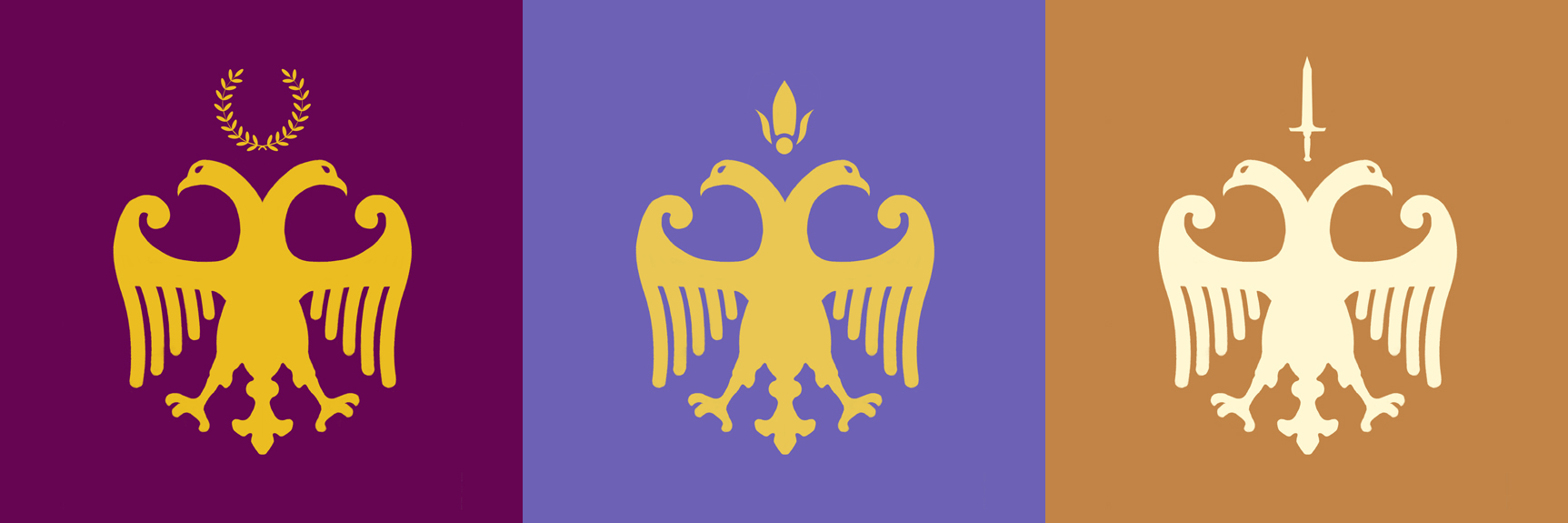
Empire presented us with quite a unique challenge. The design of this flag was pretty much set in stone from the outset: we wanted to use the double-headed eagle as it is a charge that is associated with empire, especially the Byzantine Empire (which this faction takes its inspiration from). However, because Empire is split into three individual factions that are on the brink of a civil war, we had to decide whether to go with completely different banner designs or to use the same banner across all three factions (after all, each of the three rulers claim to be the rightful heir to the throne!). In the end, we reasoned that we should take a route somewhere in between these two options by keeping the general design the same, but giving each banner its own slight variation to represent the ideals of that particular faction.
For the Northern Empire, whose leader was elected by the senate from within their own ranks, we decided to go with a deep purple. Historically, the dye used to create purple garments was extremely expensive and, as such, it is a colour that is commonly associated with emperors, kings and queens. Likewise, for the southern empire we decided to choose a shade of blue-violet. This colour represents stability and nobility, which we think is quite fitting for their leader, Empress Rhagaea, widow of the previous emperor, Arenicos. Finally, we thought that orange, a colour which relates to adventure and risk-taking, would be the best choice for the militaristic Western Empire.
Gallery
